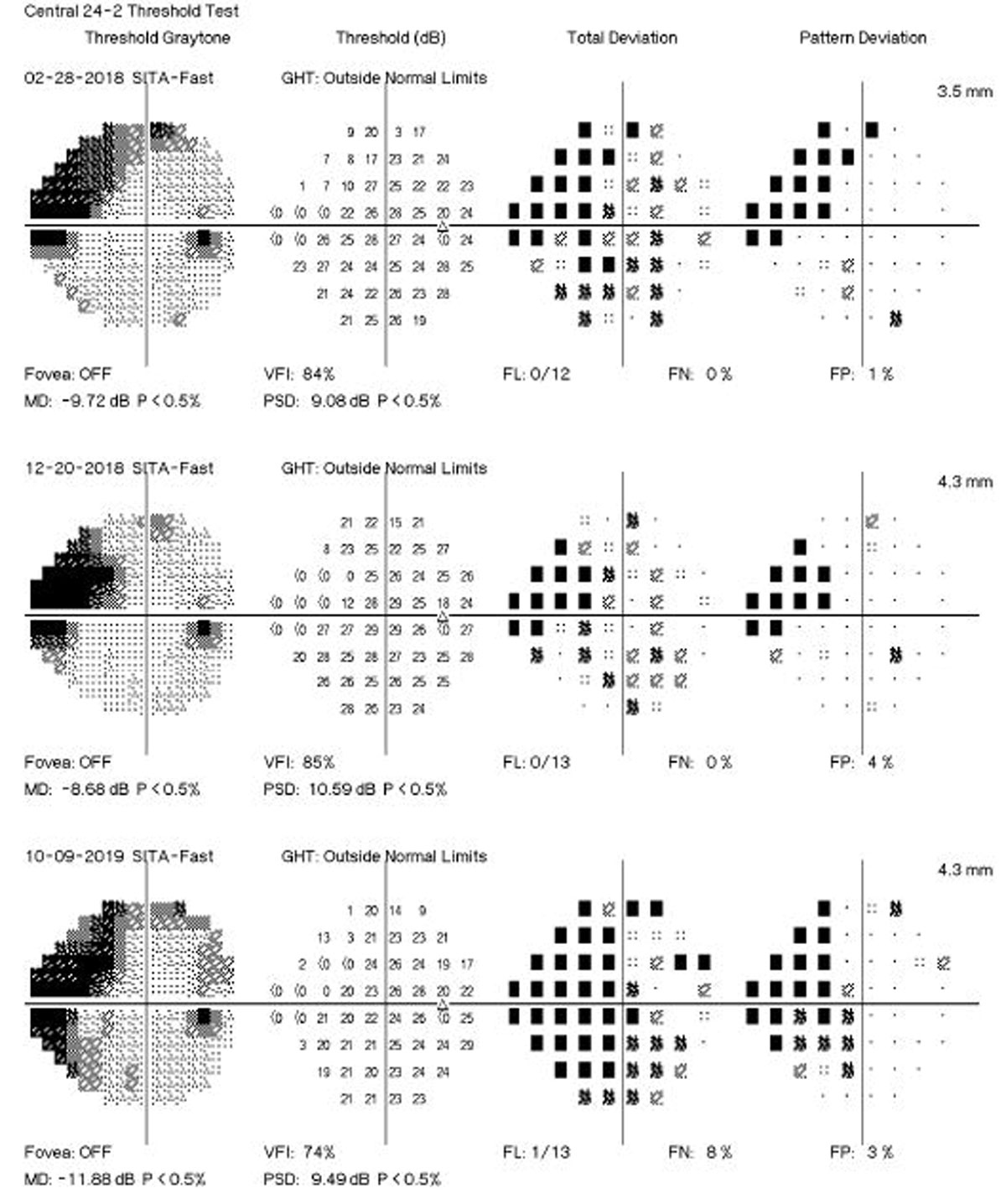 |
|
Glaucoma progression should be closely monitored for progression due to a potentially high misdiagnosis rate when switching to newer versions of testing. Photo: Michael Chaglasian, OD. Click image to enlarge. |
Last week at ARVO, many changes and advancements in glaucoma were discussed, including the evolution of visual field testing as more patient friendly protocols become mainstream. One study specifically delved into the topic of differences between SITA Standard and the newer strategies of SITA Fast and SITA Faster. As practices adopt the faster testing methods, do the SITA Standard criteria to classify glaucoma severity and rate of expected mean deviation (MD) still apply?
This is exactly what a group of researchers from Wilmer Eye Institute at Johns Hopkins University explored, collecting a total of 392,654 visual fields (VFs) using the 24-2 pattern for all three SITA protocols from 42,035 glaucoma patients and suspects. All included had at least five VFs conducted at Wilmer over a 26-year period. Percent misdiagnosis was estimated through the researchers’ construction of a “within six-month” retest distribution, consisting of all sensitivities measured by a given test strategy within six months of a SITA Standard baseline dB value. Expected sensitivities (means of the retest distributions) and expected MD values were compared between test strategies and used to adjust Hodapp-Parrish-Anderson (HPA) criteria for SITA Fast and SITA Faster.
The researchers found that HPA cutoffs should be adjusted for partitioning MD data into classifications of severe, moderate and mild. As the two faster protocols use fewer stimuli, clinicians who move patients from SITA Standard to a Fast or Faster test sometimes observe an artificially “better” result from the less rigorous protocols. Failure to adjust for this phenomenon could lead to misdiagnosis.
For instance, this study found that percentages of moderate glaucoma cases to be misclassified as mild were 21.5% for SITA Fast and 22.3% for SITA Faster results. Rates of misdiagnosis of severe glaucoma as moderate were 19.9% for SITA Fast and 30.2% for SITA Faster. Rapid MD worsening (>90th percentile) was misjudged as moderate (75th to 90th percentile) at rate of 9.8% for SITA Fast and 22.7% for SITA Faster, while moderate MD worsening was misconstrued as mild at rates of 7.6% for SITA Fast and 15.4% for SITA Faster.
The authors consequently note that “potentially significant levels of misdiagnosis may result when applying SITA Standard based criteria for classifying glaucoma severity and the rate of MD worsening to SITA Fast and SITA Faster. Classification criteria should be appropriately adjusted when using SITA Fast or SITA Faster.”
Based on their research, the following adjustments need to be made for the newer SITA protocols:
Glaucoma Staging by HPA Criteria with Proposed Modifications
| Early | Moderate | Severe |
SITA Standard (HPA) | below -6 dB | between -6 and -12 dB | above -12 dB |
SITA Fast (proposed) | below -5.3 dB | between -5.3 and -10.8 dB | above -10.8 dB |
SITA Faster (proposed) | below -5.2 dB | between -5.2 and -10 dB | above -10 dB |
Andrew Rixon, OD, of Southern College of Optometry, offers some greater insight into how these findings project clinically. He mentions that the study “addresses the concern that in moderate and severe diseases progression may be masked by the faster strategies and we need to be vigilant in our practices in attaining sufficient information to determine change once we change strategies.”
He also cautions that “it should reinforce to us that transitioning to newer strategies, even on the same device, does not mean these newer strategies will blend perfectly with the old.”
Original abstract content ©2024 Association for Research in Vision and Ophthalmology.
Bradley C, Almidani L, Herbert P, Yohannan J. Estimating percent misdiagnosis when applying SITA-Standard criteria to SITA-Fast and SITA-Faster. ARVO 2024 annual meeting. |


